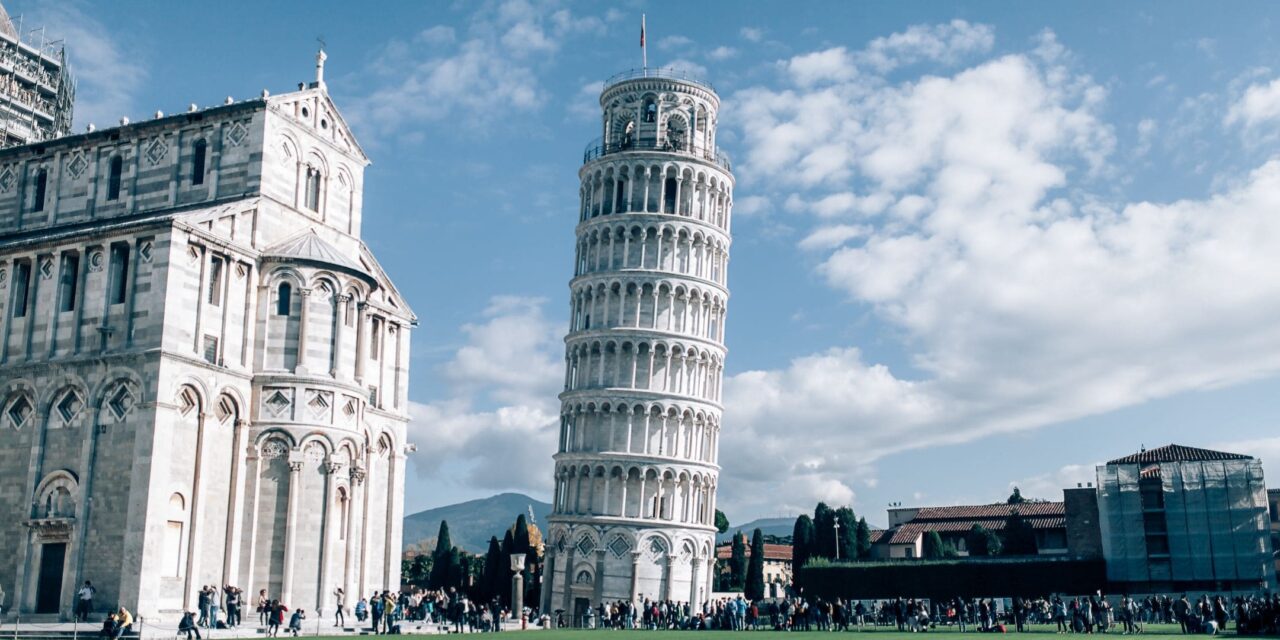Did you know that the Leaning Tower of Pisa, one of Italy’s most iconic landmarks, was in danger of collapsing before its restoration? In the 1980s, the tower was leaning at an alarming angle of 5.5%, prompting concerns that it could fall at any moment. Luckily, a team of experts undertook a massive restoration project that took over a decade to complete, restoring the tower to a safer tilt of 4%. Here’s everything you need to know about the restoration of the Leaning Tower of Pisa.
The history of the Leaning Tower of Pisa
The Leaning Tower of Pisa, located in the Piazza del Duomo in the Italian city of Pisa, was originally built as a bell tower for the nearby cathedral. Construction began in 1173 and continued for over 200 years, with a variety of architects and engineers working on the project. However, by the time the tower was halfway finished, it had already begun to tilt due to the softness of the ground it was built on.
The tower remained unfinished for over a century, as Pisa was frequently at war with neighboring cities and didn’t have the resources to complete the tower. It wasn’t until the 14th century that work resumed, with additional levels added to the tower to try and correct its tilt. However, the tower continued to lean, and by the 20th century, it had become a major tourist attraction due to its unique appearance.
The restoration project
By the 1980s, it was clear that the Leaning Tower of Pisa was in danger of collapsing. The tower was leaning at an angle of 5.5%, far beyond what was considered safe. In 1987, the Italian government launched a major restoration project, which would ultimately cost over $27 million and take over a decade to complete.
The first step in the restoration process was to remove the soil from around the base of the tower, in order to reduce the pressure on its foundation. Then, engineers began the painstaking process of straightening the tower, using a combination of weights and counterweights to carefully shift the tower back into position. The process was slow and delicate, as even a small mistake could have caused the tower to collapse.
Over the course of the restoration project, workers removed over 70 metric tons of soil from around the tower, and used over 1,000 tons of lead weights to shift the tower back into position. In addition, a system of sensors was installed to monitor the tower’s movement and make sure that it wasn’t leaning too much in any one direction.
The restored tower
After over a decade of work, the restoration of the Leaning Tower of Pisa was finally complete in 2001. The tower had been straightened to a safer angle of 4%, and was now stable enough to remain standing for centuries to come. In addition, the surrounding area had been renovated and improved, with new walkways and facilities for visitors.
Today, the Leaning Tower of Pisa remains one of Italy’s most popular tourist attractions, drawing millions of visitors from around the world each year. While the tower’s tilt is still part of its charm, visitors can now enjoy the tower without worrying about its collapse. And all of this is thanks to the massive restoration project that brought the tower back from the brink of disaster.
The restoration of the Leaning Tower of Pisa was a massive undertaking that required years of careful planning and execution. Thanks to the hard work of engineers and restoration experts, the tower was saved from collapse and remains a beloved landmark to this day. The next time you visit the tower, take a moment to appreciate the incredible effort that went into restoring it to its former glory.
Your support means the world to us! If you enjoyed this article, share it with your friends and give it a rating.
Thank you!










